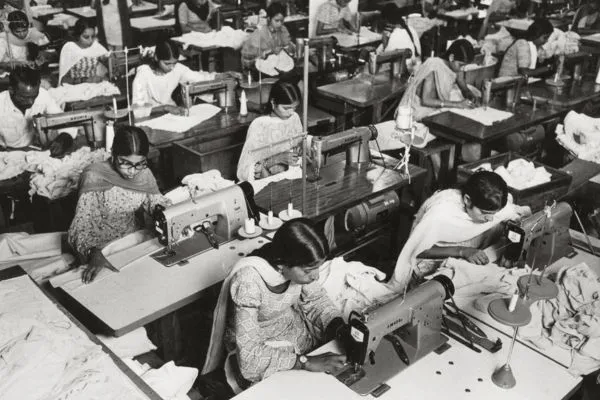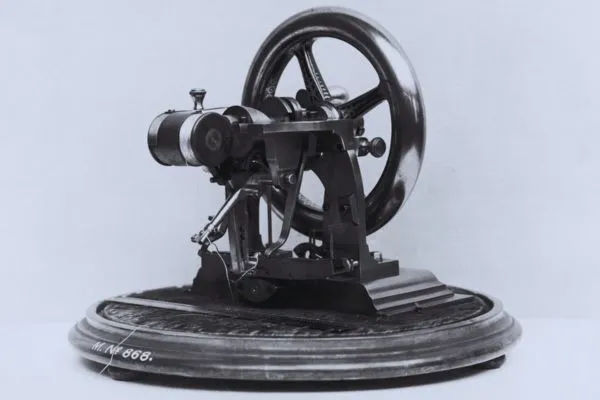The Sewing machine, exactly after the Industrial Revolution, has been shifted from individuals in homes to working in large factories. This particular transformative period has marked a dramatic change in the way to provide greater productivity at lower prices. The groundbreaking technologies made the pivotal step for the sewing machine in playing a crucial role in terms of production, influencing thousands of lives all over the world. Through this article, you will get a piece of proper knowledge about the Sewing Machine Industrial Revolution.

A sewing machine, invented by Elias Howe in 1845, refers to a mechanical or electronic device that automates stitching fabric in order to create strong and uniform seams in apparel and garments.
Table of Contents
Sewing Machine Industrial Revolution Impact
If it is possible to trace back the Industrial Revolution in Europe and the US, the timeline would be around the 1760s to the 1950s. The transition is witnessed by the world that changed the way production has been carried out. For instance, there was a drastic change from the hand production capacity level to the machine’s capacity under the production process. There was an increase in steam and water power as machine tools were developed soon after the rise of the mechanized factory system.

The sewing machine industrial revolution’s impact was wide-ranging and nothing less than revolutionary. Since the sewing machine has shaped different aspects of society, here are a few points of the impact of the Industrial Revolution on the machine:
- Mass Production of Clothing
After the Industrial Revolution, the introduction of the sewing machine increased the mass production of clothing. Such mass production helped the industry of textile to be driven enormously.
- Access to Affordable Garments Increased
At the same time, there was increased access to affordable garments in all walks of life, regardless of their class. All thanks to the mass production of clothes that ultimately reduced the prices and allowed families to purchase clothing in an affordable way.
- Women Empowerment
There is no doubt that the sewing machine in the post-industrial revolution had an impact on women’s public lives. Not only did women get economic independence, but also they started to contribute to the socio-economic dynamics.
- Economic Transition
The sewing machine brought a profound economic transition in terms of access to clothing that also improved the living standard of people.
- Modern Technological Advancement
From utilizing modern production methods to straight improvements, modern technological advancements increased efficiency as well as versatility in the sewing machine.
Why was the Sewing Machine Invented?
The straight-cut answer to this question is nothing but to reduce the amount of manual sewing work that clothing companies have adopted. Besides, there were other reasons behind the sewing machine being invented. For instance:
- The growing demand for clothing is due to the rising global population.
- To decrease the prevalent method of hand sewing, one of the labor-intensive and time-consuming tasks.
- To revolutionize the textile industry, in terms of cost-cutting, and increase in mass production volume.
- To enhance the quality of the sewn garments through machine work compared to hand-sewn garments.
- To reduce the need for experienced hand-sewing labor.
Sewing Machine Industrial Revolution Drawing
The Englishman Thomas Saint first designed a kind of sewing machine. But the drawing was never published. As a result, in 1874, after finding the patent drawings, William Newton Wilson built a replica.

In the year 1830, a sewing machine was created successfully. The French tailor Barthelemy tHimonnier was the one who designed a functioning sewing machine. Walter Hunt, the American inventor, introduced a successful machine where there were carried out to sew straight seams.
Who Invented The Sewing Machine in 1846?
The sewing machine in 1846 was not invented but rather it was designed after a patent featuring a lockstitch mechanism. The one who was behind this significant patent-to-reality converter was none other than, Elias Howe. His invention (the patent) in 1846 played a crucial advancement in the sewing machine technology. The patent was one of the milestones behind the sewing machine’s continued innovative process.

What did the Sewing Machine do?
The sewing machine was used to sew fabric as well as materials with thread. They were invented during the Industrial Revolution (1) in order to:
- To decrease the manual work.
- To increase mass production, quality, and efficiency.
- To empower women to work as seamstresses.
- To diversify the fashion trends.
How did the Sewing Machine Impact Society?
The sewing machine during the Industrial Revolution influenced society from a number of aspects. For instance, the sewing machine:
- Increased productivity.
- Reduced the production costs and hence, the economy at that time was transformed significantly.
- Empowered women to work in both homes and factories.
- Facilitated the growth of urbanization and the factory system.
- Accelerated the development of supply chain and global trade in the textile industry.
- Stepped into the innovation of modern technology.
- Increased affordable accessibility.
Sewing Machine Industrial Revolution Price
The sewing machine during the Industrial Revolution varied a lot in terms of expense. This was all due to the machine type, features, and period. For instance:
- The earliest Sewing Machines (1951-61): They could cost around $300.
- Industrial Sewing Machines: They were designed to be used in factories. In that case, the price was quite expensive as they were high-speed and heavy-duty.
- Domestic Sewing Machines: In the late 19th to the early 20th century, sewing machines were becoming available at home and accessible to a broad community.
Conclusion
A sewing machine was a much-needed revolutionary tool during the Industrial Revolution for the garment industries and women who used to do the work of stitching manually. Behind this transformation, there were inventions of a number of technologies that ultimately paved the way toward mass production capacity. It is hopeful that the article has completed your quest for knowledge in knowing the sewing machine, the life-saver, in a more precise way.

Mahedi Hasan working as an Executive (Fabric Marketing) at Pengnuo Group. Graduated with B.Sc. in Textile Engineering. Before was a Top Rated content writer at Upwork, and Level 02 Seller at Fiverr, Level 02 Publisher at Ezoic. Very passionate about content writing, SEO practice, and fashion website designing. Highly Experienced fashion writer for the last 4+ years. Have extensive 7 years of experience in the wholesale clothing business.
